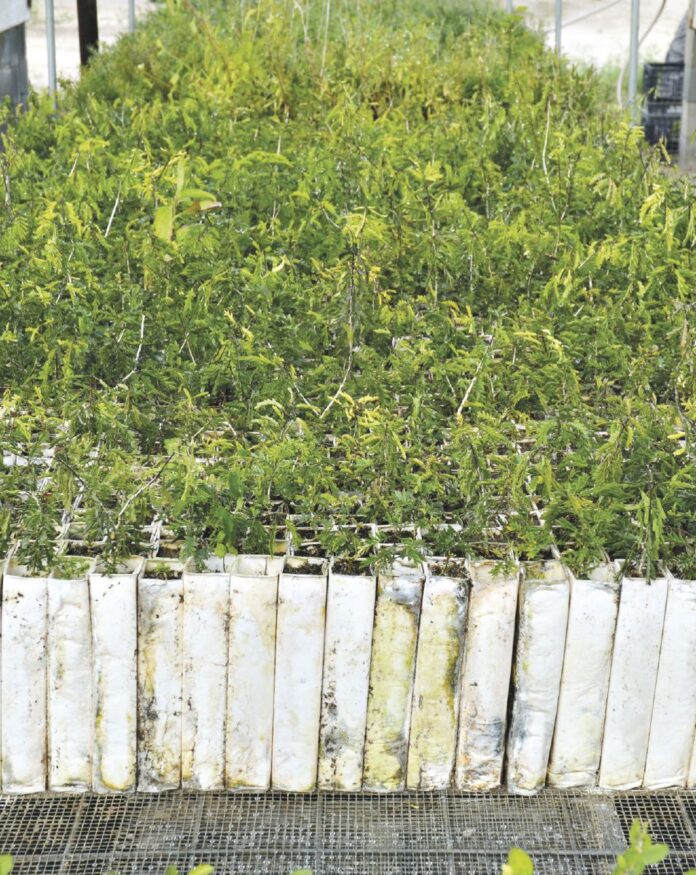ALAMO — Rene Ruiz and Tino Caldera have planted, dug and nurtured native grasses, shrubs and trees at the Native Plant Nursery here for a decade and a half.
Ruiz said he was working with the U.S. Fish and Wildlife Service’s nursery when it was down the road and in everybody’s way at nearby Santa Ana National Wildlife Refuge until moving to this location in 2006.
Ruiz and Caldera are the experts, says USFWS plant biologist Kim Wahl.
“I, myself, wouldn’t go that far,” Ruiz said, grinning.
The native plant nursery here is part of a larger movement which is gaining momentum in the Valley, and that is selecting native species when it comes to gardens and other private property.
“These are snake eyes,” Ruiz said. “As a hobby, I would say do something small. I would recommend that for people who are going to start, do something small scale and attend some of these (Texas Master Naturalists) workshops. Start off maybe with one or two species, and give it a shot.”
This past summer, Wahl did a seed collection workshop for the Texas Master Naturalists, what she calls an introduction to some of the techniques used here at the native plant nursery.
“The one thing for someone starting out is, compared to if you buy a packet of seeds from a store like for a vegetable garden, you buy a packet of seed they’re going to have a really high germination rate,” she said. “A lot of those seeds are going to sprout and grow. These, not as much.”
Native plants are not as amenable to sprouting when you want them to. In fact, Wahl said if you start out with 100 native plant seeds, you are likely to obtain a success rate of 10 percent.
“Sometimes through different methods you can get 90 percent to come up, but these are much more difficult to start from seed as well as some of these woody species that we’re working with,” she said.
The difference for many native plants is how they have evolved to perpetuate their species in the often harsh environments found in South Texas and the Valley.
“You think about the natural way they are out in the environment, these are bird-deposited seeds,” Wahl said. “Birds come and eat these seeds and they deposit the seeds around.”
But for nursery plants which don’t have the advantage of winged assistance when it comes to propagation, a more elaborate process is needed to reach germination.
“The process they go through is a process we try to mimic here,” Wahl said. “In that process, it goes through the digestive tract of an animal, so we do a lot of acid scarification here to just mimic that process.
“What it does is break down the seed coat, that hard seed coat,” she added. “If this were to just drop under a tree without going through that entire process, it may just sit there in the soil for 10, 15, 20 years.
“If this seed were to drop right under the parent plant, it doesn’t want to germinate until that parent plant is dead,” Wahl added.
Wahl suggests some of the shorter-lived species might be easier to cultivate at home, plants like crusita, trixis, Turk’s cap and red sage.
“Those are things that germinate a lot more readily without doing any sort of treatment on it, “ she said.




